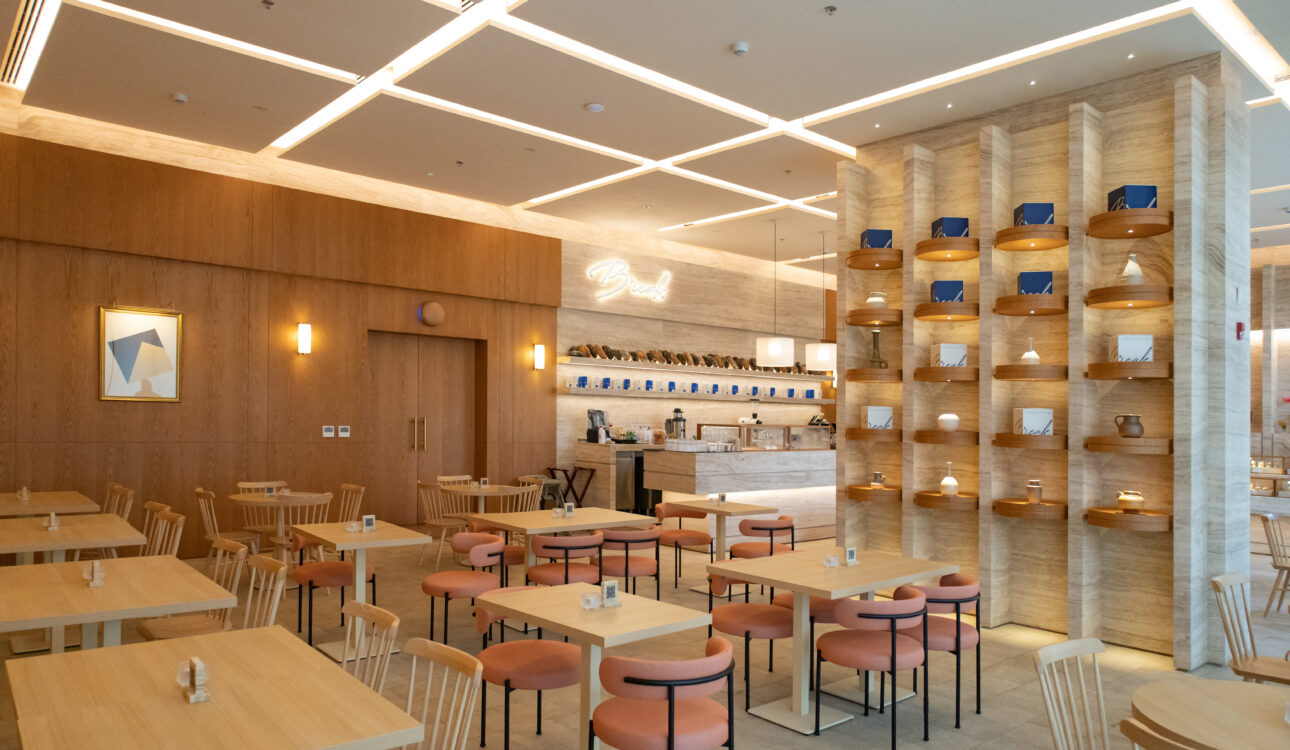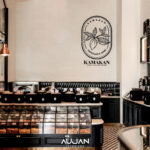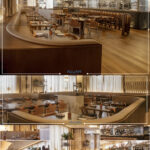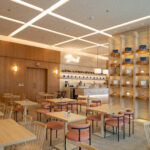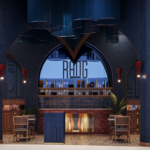Interior design and fit-out projects are critical aspects of creating functional and aesthetically pleasing spaces, whether it’s for a commercial business, residential home, or public establishment. However, understanding the costs involved in such projects can often be overwhelming for clients and professionals alike. This article provides an in-depth look at the various factors that influence costs in interior design and fit-out projects, helping you navigate this complex process with ease.
Introduction to Interior Design and Fit-Out Projects
Interior design and fit-out projects encompass the process of transforming a space into something functional, comfortable, and visually appealing. This involves designing the layout, selecting furnishings and materials, and implementing construction work.
Interior design refers to the creative and technical process of shaping a space to meet specific aesthetic and functional needs. The fit-out process, on the other hand, involves outfitting the interior with the necessary finishes, such as flooring, lighting, furniture, and decorative elements. These processes often go hand-in-hand to create a cohesive and functional environment.
Key Factors Affecting Costs in Interior Design and Fit-Out Projects
Understanding the costs in interior design and fit-out projects starts with recognizing the primary factors that influence expenses. These can range from project size to material selection and labor requirements. Here are the most important elements that determine the overall cost:
Location and Size of the Project
The location of the project plays a significant role in determining the cost. Urban centers often have higher labor and material costs due to demand and supply dynamics. Additionally, the size of the space being designed impacts the project budget. Larger spaces naturally require more materials and labor, increasing the cost.
Scope of Work and Design Complexity
The complexity of the design and scope of work required is another key factor. A simple, straightforward project may have lower costs, while intricate, bespoke designs will naturally incur higher expenses. More complex projects may also involve additional consultations with architects, engineers, or other specialists, further raising the costs.
Materials and Finishes
High-end materials like marble, rare wood types, or imported finishes will increase costs, while more affordable materials can help control the budget. The selection of materials directly affects the durability, appearance, and overall quality of the fit-out, so balancing between luxury and cost-effective options is crucial.
Labor and Contractor Expertise
Labor costs can vary depending on the expertise required. Skilled contractors, artisans, and designers who specialize in high-end finishes will charge more than general workers. The quality of craftsmanship and the expertise of the workforce involved are pivotal in defining both the aesthetic and functional success of the project.
Budgeting for Interior Design and Fit-Out Projects
A well-structured budget is essential for any successful interior design and fit-out project. Establishing a realistic budget can help avoid surprises during the execution phase.
Setting Realistic Budget Expectations
Setting an appropriate budget is essential for managing the costs of your interior design and fit-out project. It is important to understand the broad spectrum of potential costs, including design fees, construction costs, and post-project maintenance. Having clear expectations will allow you to prioritize specific design elements without going overboard.
Allocating Costs: Design, Construction, and Furnishing
Proper cost allocation ensures that all aspects of the project are accounted for. Typically, costs can be broken down into categories such as design (consultation fees, permits, and project management), construction (labor, materials, and site preparation), and furnishing (furniture, fixtures, and equipment). Knowing how to allocate resources across these categories will keep your project on track.
Common Costs in Interior Design and Fit-Out Projects
Understanding the common costs involved in interior design and fit-out projects is critical to prevent financial surprises.
Design Fees and Consultation Costs
The design phase involves working with professionals who will conceptualize the space. Design fees vary depending on the expertise and reputation of the designer, the complexity of the project, and the time involved in consultation. Some designers charge a flat fee, while others charge hourly rates or as a percentage of the total project cost.
Construction and Labor Costs
Construction costs typically make up a large portion of the overall budget. Labor expenses will depend on the region, the complexity of the work, and the time required for completion. If specialized labor is needed for certain tasks (e.g., custom cabinetry or intricate flooring), these costs will increase.
Material Costs: High-End vs Standard
The choice of materials plays a significant role in determining project costs. High-end materials such as imported stone, exotic wood, and luxury finishes can significantly increase the project budget. On the other hand, using more standard materials can help keep costs under control while still achieving a stylish and functional result.
Furniture and Equipment Costs
Furnishing the space is another significant expense in interior design and fit-out projects. Whether you’re outfitting an office, retail space, or residential property, the cost of furniture and equipment will vary depending on the style, quality, and quantity of pieces chosen. Bespoke or designer furniture will naturally add to the overall project cost.
Cost-Effective Strategies in Interior Design and Fit-Out Projects
Managing costs effectively is key to maintaining a balance between quality and budget.
Choosing the Right Materials for Budget-Conscious Projects
Selecting cost-effective materials doesn’t mean sacrificing quality. Many budget-friendly options look luxurious and can stand the test of time. For example, engineered wood floors can mimic the look of solid hardwood, while still being more affordable.
Efficient Use of Space and Layout
A well-thought-out design that maximizes the use of space can reduce the need for excessive materials or furnishings. Opting for minimalist designs and multi-purpose furniture can help you make the most of your space while staying within budget.
Utilizing In-House Services vs Outsourcing
When possible, leveraging in-house services such as joinery, painting, and upholstery can reduce costs compared to outsourcing these tasks to third-party contractors. This also allows for greater control over the quality and timelines.
The Role of Design in Cost Management
Effective design is not only about aesthetics; it also plays a crucial role in managing the overall costs of a project.
Balancing Aesthetic Appeal and Cost Efficiency
Successful interior design must strike a balance between beauty and functionality without overspending. Clever design solutions like strategic use of color, lighting, and layouts can elevate a space without the need for costly fixtures or materials.
Impact of Custom Designs vs Ready-Made Solutions
Custom-made furniture or finishes often come with a higher price tag. While these bespoke designs offer uniqueness and personalization, ready-made solutions can provide a similar aesthetic at a fraction of the cost.
Understanding Hidden Costs in Interior Design and Fit-Out Projects
Many clients are unaware of hidden costs that can arise during interior design and fit-out projects. These costs are often not immediately apparent and can significantly impact the final budget.
Unexpected Delays and Their Costs
Delays in project timelines often result in additional costs due to extended labor charges or the need for expedited shipping of materials. Addressing potential delays early and keeping an open line of communication with contractors can help minimize these unforeseen expenses.
Cost of Permits, Regulations, and Compliance
Depending on the location of the project, there may be costs associated with obtaining necessary permits, meeting building codes, and ensuring compliance with local regulations. These requirements should be factored into the initial budget to avoid surprises.
The Impact of Project Scope Creep
Scope creep refers to the tendency for projects to expand beyond the original plan, often leading to additional costs. It is crucial to define the project scope clearly from the outset and stick to it to avoid escalating costs.
The Impact of Location on Project Costs
The geographic location of the project can have a major influence on the costs associated with both labor and materials.
Regional Differences in Labor and Material Costs
The cost of labor and materials can vary greatly depending on the project’s location. Major metropolitan areas typically have higher labor costs due to the cost of living and higher demand for skilled workers. Similarly, remote areas may experience increased shipping costs for materials.
Specific Considerations for Urban and Remote Areas
Projects in urban areas may encounter logistical challenges like space restrictions, noise regulations, or limited access for construction teams. These factors can all add to the overall cost, whereas remote locations might require additional transportation expenses for both labor and materials.
Cost Variations Based on Project Type
The type of interior design and fit-out project influences the cost breakdown significantly. Different project types, such as residential, commercial, and industrial, come with varying levels of complexity, material choices, and labor requirements.
Residential vs Commercial Projects: Differences in Costs
Residential projects generally focus on aesthetic and functional needs tailored to personal preferences, whereas commercial projects often involve more complex infrastructure and require adherence to stricter codes and regulations. Commercial spaces tend to have higher overall costs due to larger scale and specialized needs.
Retail, Hospitality, and Healthcare Fit-Out Costs
Retail and hospitality spaces require unique design elements to cater to customer experience, while healthcare facilities must comply with strict regulations. As such, each type of project comes with its own set of cost considerations.
How to Choose a Contractor for Your Interior Design and Fit-Out Project
Choosing the right contractor is essential for controlling costs and ensuring high-quality results.
Evaluating Contractor Experience and Portfolio
Hiring a contractor with relevant experience in your type of project can help ensure that they understand the unique challenges and requirements. Review their portfolio to assess their design quality and previous work.
Negotiating Terms and Avoiding Overcharging
It’s important to establish clear terms with your contractor before work begins. Discussing payment schedules, material choices, and timelines upfront can help avoid misunderstandings and prevent unexpected charges.
Managing Costs During the Project
Throughout the project, ongoing management is essential to keep costs within budget.
Monitoring Project Progress to Avoid Budget Overruns
Regularly monitoring the project’s progress allows you to spot any issues early. Communicating frequently with your contractor ensures that any deviations from the original plan are addressed before they escalate into costly problems.
Handling Change Orders and Additional Requests
Changes to the original scope of work can lead to additional costs. Any requests for modifications should be evaluated carefully for their impact on both budget and timeline.
Post-Project Costs: Maintenance and Upkeep
After the project is completed, additional costs may arise in the form of maintenance and upkeep.
The Importance of Post-Project Support and Maintenance
Regular maintenance ensures that the space remains in top condition. Setting aside funds for ongoing repairs and replacements can help preserve the longevity of the fit-out.
Ensuring Longevity and Quality of the Fit-Out Work
The quality of materials and workmanship impacts the lifespan of the interior. Ensuring proper maintenance and care will help protect your investment.
Case Studies: Cost Breakdown of Real Projects
Examining case studies of real projects can offer valuable insights into the cost breakdown and management of interior design and fit-out projects.
Example 1: Small Office Fit-Out Project
A small office fit-out project may have a simpler design, lower material costs, and fewer labor requirements. The overall budget may include basic finishes, furniture, and essential fixtures.
Example 2: Large Retail Space Design and Fit-Out
A large retail space will have higher costs due to the need for specialized materials, high-end finishes, and the integration of technology. Additionally, it will likely require specialized design elements to attract customers.
Conclusion: Managing and Understanding Costs Effectively
Understanding the full spectrum of costs involved in interior design and fit-out projects is key to successful project management. By setting a realistic budget, carefully selecting materials and labor, and maintaining open communication with contractors, you can ensure that your project stays on track and meets your financial expectations.
Recap of Key Cost Management Strategies
Prioritize key areas, keep a close eye on costs, and make informed decisions about design, materials, and labor.
The Importance of Planning and Communication in Managing Costs
Effective planning and communication are essential to prevent budget overruns and ensure that the project is completed successfully within the allocated resources.
Frequently Asked Questions (FAQs)
Q: What is the difference between interior design and fit-out costs?
A: Interior design costs cover the creative and planning aspects of transforming a space, while fit-out costs involve the physical construction and furnishing of the space.
Q: How can I reduce the cost of my interior design project?
A: Opt for standard materials, minimize custom designs, and prioritize essential elements to stay within budget.
Q: Are there hidden costs in interior design and fit-out projects?
A: Yes, unexpected delays, permits, and changes in project scope can result in hidden costs.
Q: Why are materials so expensive in interior design projects?
A: High-quality materials, imported goods, and custom finishes drive up material costs in interior design projects.
Q: How does the size of the project affect the overall cost?
A: Larger projects require more materials, labor, and time, which increases costs.
Q: Can I negotiate the cost with contractors and designers?
A: Yes, it is possible to negotiate fees, terms, and material choices to better suit your budget.

